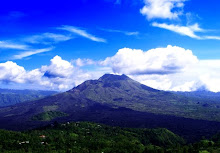Seeing the northern lights, or the aurora borealis, as they are also known, is a jaw-dropping and mystical moment.
The lights are at their most frequent in late autumn and winter/early spring.
Between the autumn equinox and spring equinox (21 September - 21 March), it is dark between 6 pm and 1 am, and you have maximum chances of spotting the lights. However, the weather is also of importance, and September, October and November tend to be wet and snowless in the north.
From December the weather dries up, and there is normally plenty of snow. If you come in December or January, you experience the polar nights with atmospheric evenings and very short days.
In February and March the days are longer and you see more of the snow-clad landscapes during daytime, and the evenings still offer maximum chances to spot the northern lights.
No guarantee can be given, though. Some weeks, you are treated to fantastic displays, repeated several times during the evening. Other times, the snow falls densely, or the northern lights simply stay away. Naturally, the longer you stay and the more time you set aside, the better the odds.
Where to see Aurora Borealis
In order to get full value from the show you should avoid the full moon and places with a lot of light as they make the experience considerably paler. Also remember to wrap up warmly.
Theoretically, you can see the northern lights all over Norway. However, the best places are above the Arctic Circle in Northern Norway.
The northern lights belt hits Northern Norway in the Lofoten Islands, and follows the coast all the way up to the North Cape. This means that no other place on earth offers better chances of spotting the lights, and one location in this area might be as good as another. In fact, one often observes the same northern lights in the Lofoten as in Tromsø, just from a different angle. The driest weather, giving clear skies, is found inland, statistically providing the best chances, but with strong eastern winds, the coast can be clearer than inland areas.
Activities under the northern lights
Aurora is an unpredictable lady, and you never know when she will decide to turn up. This diva keeps you waiting, so whenever you go hunting for the northern lights above the Arctic Circle, make sure you set aside the whole evening. Northern lights worshippers do everything from cross-country skiing to building snowmen in order to keep warm and entertained while outside.
However, organised tours are a good alternative.
Experience the aurora at sea
Witness the northern lights as they fill the inky night sky from the comfort of one of Hurtigruten's ships.
Witness the northern lights as they fill the inky night sky from the comfort of one of Hurtigruten's ships.
Snowmobile safaris
Driving your own snowmobile is a feeling of freedom in itself, and when you do it under the northern lights, you will definitely have an experience to talk about. Several operators offer such tours in Northern Norway. One recommended alternative is a guided snowmobile tour from Sorrisniva Igloo Hotel. There is a similar option in Kirkenes.
Driving your own snowmobile is a feeling of freedom in itself, and when you do it under the northern lights, you will definitely have an experience to talk about. Several operators offer such tours in Northern Norway. One recommended alternative is a guided snowmobile tour from Sorrisniva Igloo Hotel. There is a similar option in Kirkenes.
Northern lights lectures and experiences with accommodatio
Polarlightcenter in Laukvik on Austvågøya in the Lofeten Island offers presentations, information, courses and exhibitions. The centre is run by enthusiastic northern lights researchers Rob and Therese, who will give you informational and magic experiences.
Chasing the northern lightsIf the northern lights do not come to you, you can go to the northern lights. Set off by car into the polar night on the lookout for clear skies.
Joanna Lumley's northern lights guide, Kjetil Skogil, offers rides from Tromsø. You can also go in search of the mystical lights starting from Alta with the company Glod
If you want to learn how to catch the northern lights on your camera, join an organised outing with Creative Vacations. There is also the Northern Lights Bus in Tromso.
Dog sledding
You can book dog sledding under the Aurora Borealis lights in the Pasvik Valley, on the Russian border in Finnmark.
You can book dog sledding under the Aurora Borealis lights in the Pasvik Valley, on the Russian border in Finnmark.





No comments:
Post a Comment